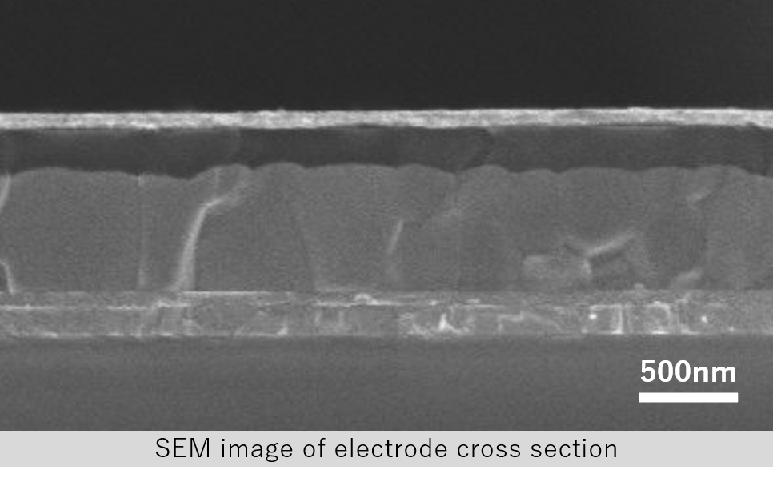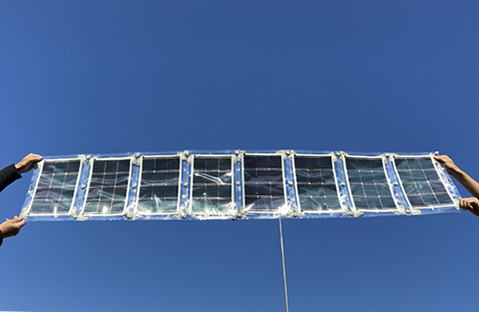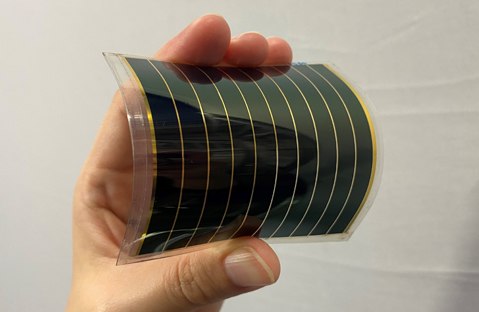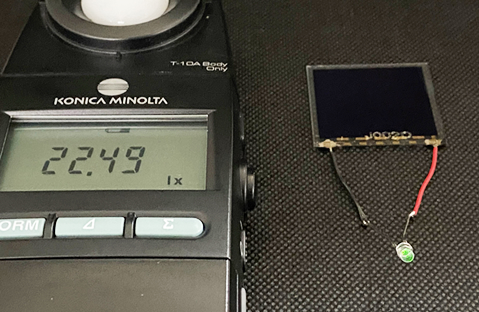
The Properties of the Ultrathin Perovskite Solar Cell Film
 Perovskite structure
Perovskite structure-
Perovskite structure is a crystalline structure expressing an ABX3 composition like perovskite (CaTiO3), and has been the subject to of various research projects such as a photonics or superconductor materials.
In the past, perovskite structure materials were synthesized using inorganic materials, but in recent years, it’s become possible to create organic-inorganic hybrid perovskite films using a wet process based on organic chemistry.
EneCoat technologies is also utilizing this method to develop and manufacture our ultrathin perovskite solar cell films.

Though Perovskite solar cells are a relatively new player, having only been introduced in the 2010s, from there they underwent a rapid amount of research and development. The diagram above shows a comparison of the various types of solar cells. Perovskite solar cells managed to shoot past a 20% conversion efficiency just after their arrival, immediately outstripping dye-sensitized solar cells and rivaling others.
Transition of power conversion efficiency of each solar cell
※Created based on data from the US National Renewable Energy Laboratory (NREL)
https://www.nrel.gov/pv/cell-efficiency.html
Manufacturing Process

Using a low-temperature coating process, it is possible to create a highly uniform ultrathin film as shown in the figure.
Taking advantage of the wet process makes large area surfaces suitable for mass production, We plan to move forward with Roll to Roll production that is can be tailored to the application and scale in the future.
Features of the Ultrathin Solar Cell Film
-

High Efficiency 25.7%
The fastest progression to a conversion efficiency of 20% out of the many potential materials for next-generation solar cells.
As of Dec.2021, it holds the world record of 25.7% at the cell size. -

High Conversion Efficiency in Moderate & Low Light Conditions
In addition to bright sources such as sunny weather it also maintains a relatively high conversion efficiency even. in moderate sources like cloudy weather and even low light conditions like indoors.
-

Low-Cost Low-Temperature Coating Process
A low-temperature coating process and the nano-level ultrathin film of the coating layer keep manufacturing costs low.
-

Versatile Thin Film, Lightweight, Flexible
The power generation of this ultrathin film is extremely high relative to weight.
Using ultra-thin glass and film as a substrate, it enables the creation of both lightweight and flexible solar cells.